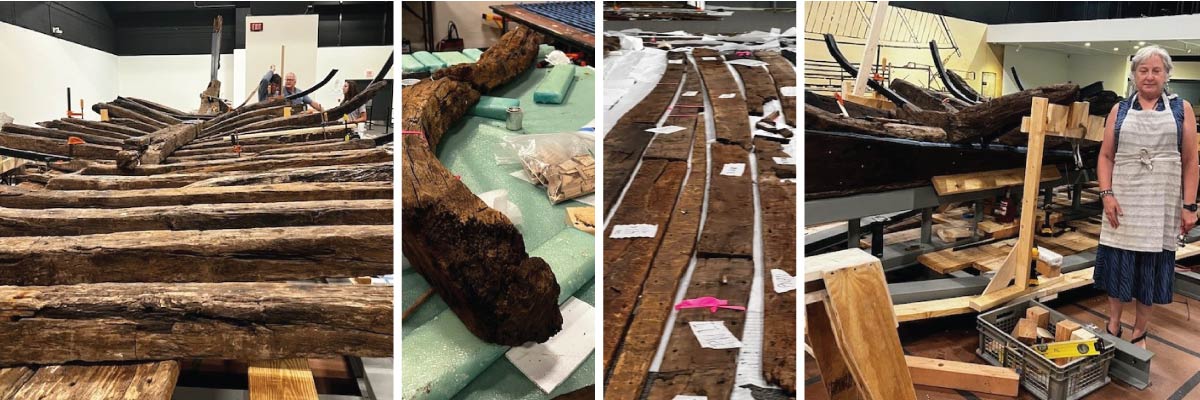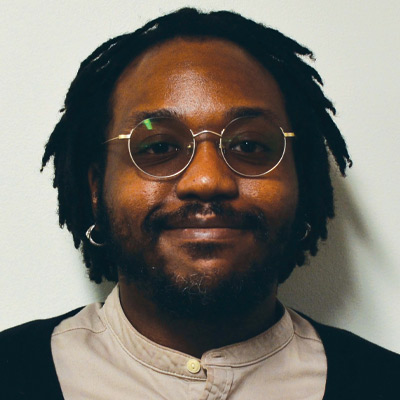
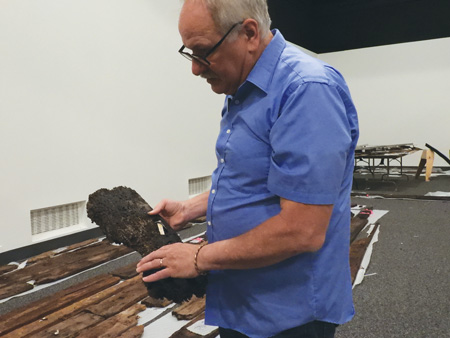 August 8, 2025 — In 2010, as construction crews in Lower Manhattan were building the new World Trade Center, they discovered a gunboat from the Revolutionary War beneath the soil where the Twin Towers once stood. At the time, the professional archeologists monitoring the construction had only two weeks to excavate the boat and more than 2,000 artifacts, like musket balls, buttons and more.
August 8, 2025 — In 2010, as construction crews in Lower Manhattan were building the new World Trade Center, they discovered a gunboat from the Revolutionary War beneath the soil where the Twin Towers once stood. At the time, the professional archeologists monitoring the construction had only two weeks to excavate the boat and more than 2,000 artifacts, like musket balls, buttons and more.
For a decade, the boat was under the care of Dr. Peter Fix, an Associate Research Scientist of Archeological Watercraft and Aircraft Conservation at Texas A&M University. Much of the work to preserve the ship was done at the university. Now, the gunboat has made its way back to New York as the New York State Museum works to reconstruct the remaining 34 sections of the vessel for permanent display.
Michael Lucas is a Museum Scientist 3 and Curator of Historical Archeology at the New York State Museum. He said that the reconstruction of the gunboat has been exciting, and that PEF members and other museum employees have been volunteering their time to help with the effort.
“We have had a tremendous turnout from PEF members who helped out during the ongoing reconstruction of the World Trade Center ship remnant. Over 50 people from the State Museum, Library, and Archives volunteered on the ship reconstruction,” said Lucas. “I believe that this opportunity has helped foster a sense of ownership and collaboration among the Cultural Education Center staff.”
Although most of the rebuilding is done by the team from Texas A&M, Lucas plays a big part in making sure that it is taken care of by everyone who works on it.
“As a curator of historical archeology, I oversee the archeology collection which is about 4.5 million artifacts. So, if you look at the ship as an artifact—and it is a very big artifact—it is part of that collection that I oversee,” said Lucas. “I liaison with the people from Texas A&M to make sure that the work is being done correctly.”
In addition to his coordination efforts, Lucas has spent hours working on cleaning and assembling the gunboat as well as working alongside others to bring the larger exhibit into focus.
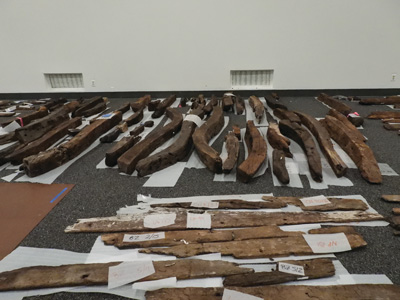 “This exhibit is going to have different areas that talk about parts of the Revolutionary
“This exhibit is going to have different areas that talk about parts of the Revolutionary
War and other different things happening during the war,” said Lucas. “It will also deal with the promises of the revolution—like freedom, liberty and democracy—and how that plays out through time.”
The team consists of other museum staff, including exhibit painters and builders, as well as other curators and archeologists. It is a team effort, said Lucas, that brings in people from almost every department.
Cher Schneider is an Archives Conservation Specialist 3 and Head of Conservation for the Office of Cultural Education at the museum. Normally, Schneider works on paper conservation, but she said that the experience of helping to conserve the ship and work with Texas A&M has been enlightening.
“I have learned a lot about object conservation and a lot of the information that crosses over in the preservation of materials really falls into that overarching responsibility,” said Schneider. “When I was brought on, we talked a lot with leadership about preventative conservation. That includes environmental factors.”
A lot of the collections at the museum, much like the gunboat, deal with organic material, so it is important, said Schneider, to make sure the temperature, relative humidity and even the lighting used are all properly regulated for the artifact. The museum also focuses on what they call Integrated Pest Management to mitigate damage from insects and animals on artifacts.
The process of building the boat has seen members from other departments within the museum pitch in and get more hands-on with a piece of history.
Barbara Lilley is a Library Development Specialist 2 with a focus on Conservation and Preservation. She said that she was nervous about working on the gunboat but was excited about working with the conservation team to clean off the hundreds of wood planks that were found at Ground Zero.
“I was asking a lot of questions about handling, and the team was very good about showing me what to do,” said Lilley. “We were scraping with dental tools, so how hard do you need to scrape?”
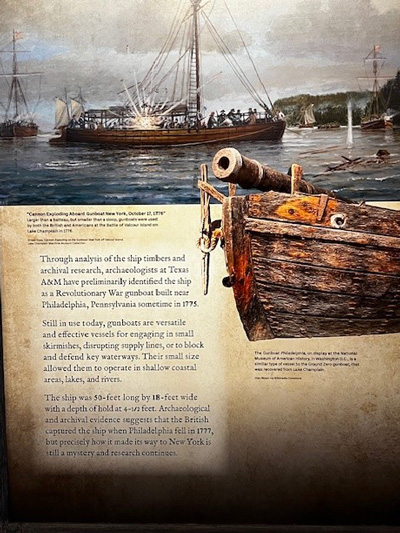 Lilley has visited several dig sites during her career. She will soon be retiring after 32 years with the agency but said that she is hopeful to be able to spend more time volunteering with the boat.
Lilley has visited several dig sites during her career. She will soon be retiring after 32 years with the agency but said that she is hopeful to be able to spend more time volunteering with the boat.
“If they still need help, I would come in when I’m retired,” she said. “I hope to still go on some of the digs. We’re looking for paleolithic items and that to me is fascinating. This whole experience is so different from sitting behind a computer all day. It’s a great experience and you’re learning all the history of this boat.”
John Diefenderfer is an Archives Records Management Specialist 3 and works as the Program Officer for the Documentary Heritage Program at the New York State Archives. The program provides grant funding to non-governmental historic records repositories in the state. Although that is somewhat far removed from the conservation of the boat, Diefenderfer could not resist volunteering on the project.
“There was an email sent around that the boat had arrived, and I said: ‘This is a once in a lifetime opportunity,’” said Diefenderfer. “My supervisor said absolutely and to go for it, so I came down and signed up.”
Diefenderfer said that dealing with 200-year-old wooden planks was nerve-wracking but rewarding.
“It was surprising how robust and sturdy 200-year-old wood can be,” said Diefenderfer. “If you think about it being buried under the World Trade Center, you would think it would be mush. But it’s held up.”
The gunboat is slated to be one of the centerpieces for the New York State Museum’s celebration of the 250th Anniversary of the Declaration of Independence on July 4, 2026, and is expected to attract visitors from across the country and even around the world.
Schneider and Lucas both hope that visitors to the exhibit take the time to appreciate both the history of the gunboat and the time, labor and planning that went into the work. It is a team effort, they said, to install the project, document it, conserve the artifact, and plan the exhibition.
“One of the most powerful parts of this exhibit is that the installation and parts of conservation took place in view of the public,” said Schneider. “That kind of transparency is rare. When we do our jobs well, it often looks effortless. But there’s no magic wand. It’s detailed, methodical and deeply physical work that demands patience, creativity and commitment.”
